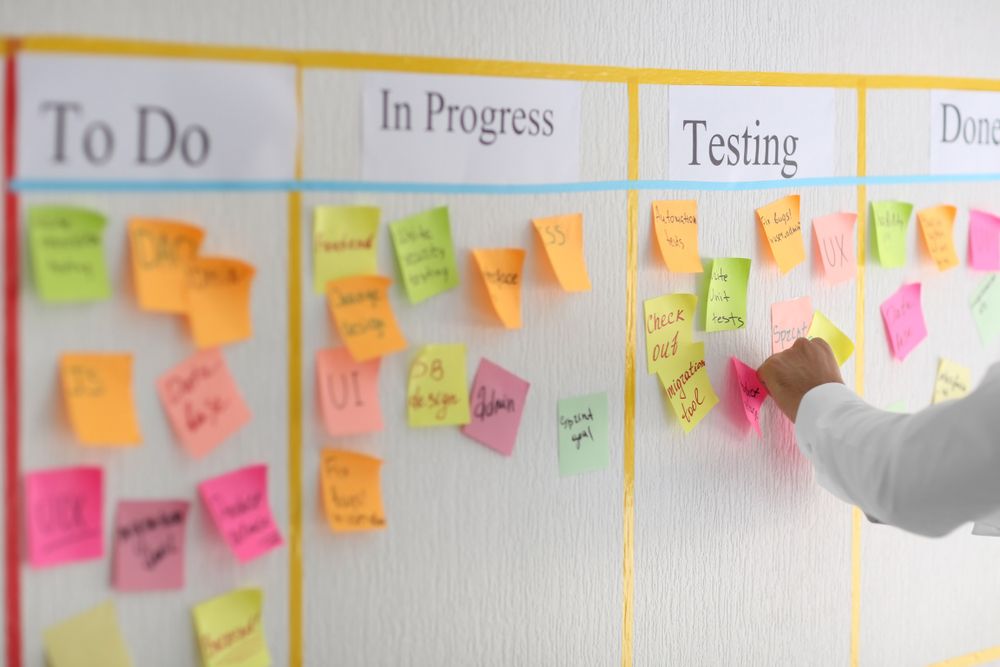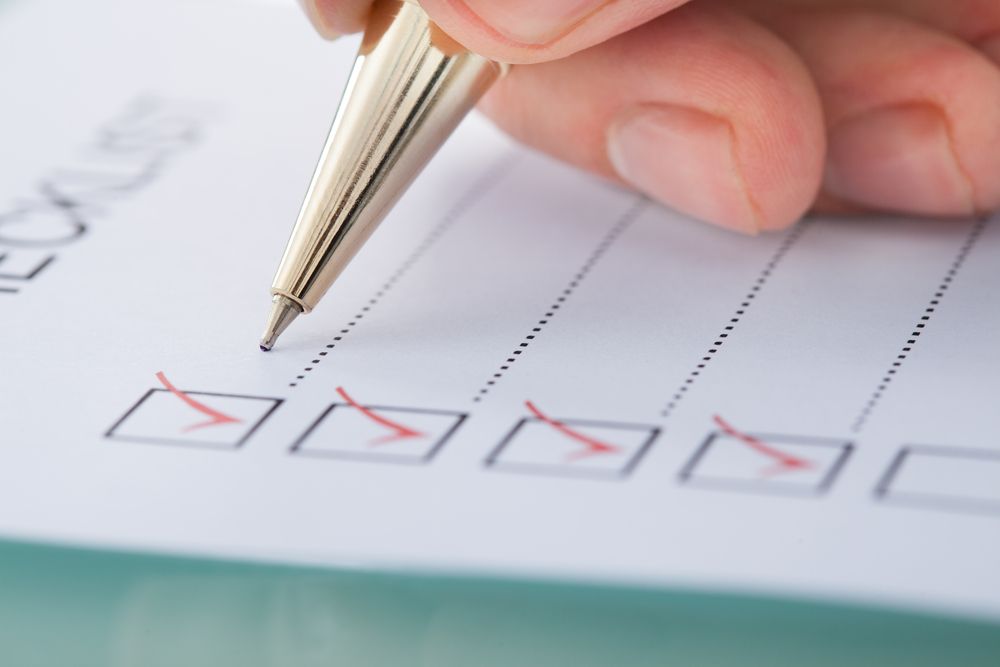The SaaS space has boomed in the last few years with new planning apps designed to work for just about anyone’s planning style. In fact, software companies are making huge strides in creating tools that mimic the way we used to plan on paper.
(Interestingly, though, paper planners are actually coming back into fashion.)
I’ve noticed that almost all of these apps fall into one or both of these two categories: Kanban board or task list.
A Kanban board uses cards to visually represent tasks or ideas, and columns to represent each phase of the overall project or process. In the physical version, the board is often a whiteboard or large white paper tacked to a wall, and the cards are sticky notes. I’ve seen these on the walls of many software development offices — they work really well with agile development practices. Trello is a good example of a digital planning app that falls into the Kanban category.

A task-list is simply a list of to-dos. You check off each task as it is completed. You can break the list down into sections, and you can nest lists inside lists — but in the end, you’re still working with a checklist. Asana is a good example of a digital planning app that falls into the task-list category.

Some of the newer software coming on the market (and some of the latest updates to more established apps, too) allow you to choose between a Kanban board layout and a task-list layout. Some apps even allow you to switch layouts back and forth.
But here’s the rub.
Tasks don’t transfer very well from one layout to another.
And thinking about my own behaviour across the different apps I’ve experimented with over time, I’ve noticed that my brain doesn’t transfer very well between these two styles either.
It got me thinking …
These two planning styles are actually very different, they work for different planning purposes and processes … and really, they work with different brains.
Kanban board apps seem to work well for visual planners.
Task-list apps work well for list planners.
So how do you know which one you are?
After talking to other planning nerds, my team, customers, mentors, and mastermind colleagues, I’ve dissected the two different planner types and come up with my own little “quiz.”
Read on to discover what your planner type might be …
You might be a visual planner if …
You’re a visual learner.
If you learn best by watching — seeing a demonstration, looking at images — and maybe do less well with information given to you via an audible explanation, you might be a visual learner. And the visual nature of Kanban board-style planning apps probably work well for you.
The visual layout of these apps allows you to quickly identify the status of a task based on the card’s color and location on a board.
Color coding makes your brain happy.
Once again, Kanban board-style apps win over task-list-style apps when it comes to easy visual cues. Using color-coding for the cards can help you communicate and comprehend task status, task type, due date, and priority level.
For some people, visual cues like this cut down on overwhelm and keep them on track.
You are motivated by being able to see your (and your team’s) progress at a glance.
Kanban board-style planning apps win hands-down for any projects that require collaboration with a team or across teams. They’re perfect for brainstorming, and they eliminate a lot of the bottlenecks that can happen with task lists.
This visual system makes it easy for everyone on the team to see the statuses of all the project-related tasks in one place, at a glance. As each task is completed and moved to the next stage, the project picture stays crystal clear. And unlike with task lists, you never lose context — completed tasks don’t disappear when they’re completed, they’re just moved to the “Done” column.
Considering that the human brain processes visual information 60,000 times faster than text, Kanban board-style apps have a leg up for quick comprehension.
You might be a list planner if …
You get immense satisfaction from checking things off a list.
Let’s be honest. No matter your personality type, sometimes it just feels good to check off an item on your to-do list and watch it disappear.
If this is a huge motivator for you, though, you might feel more comfortable with a task-list-style planning app.
You’re not collaborating with a large team.
Task lists can be simpler to work with for managing your own tasks, or even a few tasks for a few team members. List planning makes it clear who is the owner of each task, and whether or not the task has been completed. Unless you use an app with tagging features, there are no stages involved with task lists— a task is either done or not.
For some of us, this can feel less chaotic than a visual planning tool where “done” tasks remain in view.
You love using paper planners.
There’s something about task-list planning apps that work well for people who love paper planners. Maybe it relates to the satisfaction we sometimes (or always!) feel from checking off a task on a to-do list.
But practically speaking, a task list takes up less real estate. A paper checklist has a smaller footprint than a big Kanban board on the wall. This is true even with digital tools.
If you’re already using a paper planner, and you’re really happy with it, using a task-list-style planning app is probably a low friction transition.
Planning With a Team
When it comes to the right planning method for your team, though, personality types can vary — and it might not be so clear which planner style is best.
In this case, the right answer comes down to your team dynamics. What’s the current workflow? How is work assigned and tracked? Do you just need to get tasks done, or do you need to see how an entire project is progressing? The answers to these questions will help point you to the right tool for your team.
Planning Styles by Meyers-Briggs Personality Types
I had to throw in this section here because I’m quite fond of Meyers-Briggs personality typing. I think knowing someone’s personality type can tell you a lot about them, and in a business setting it can help you work better with them.
If you enjoy Meyers-Briggs personality classification too, you might enjoy these articles on planning and productivity apps for your type: